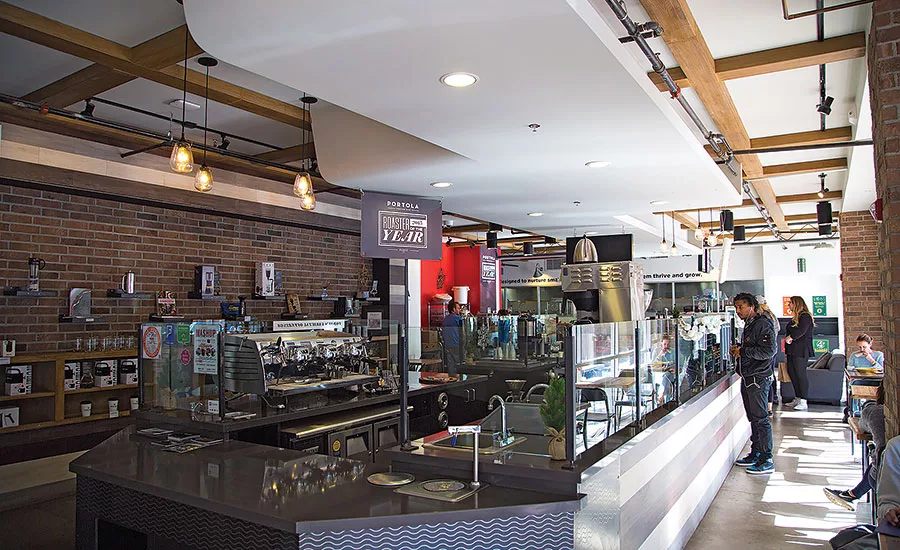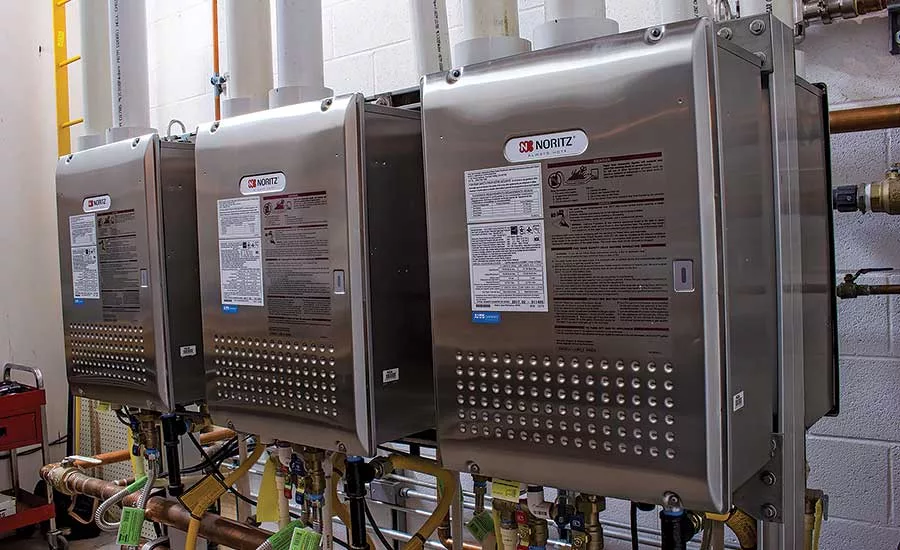Why restaurants choose tankless water heaters
Restaurants have begun placing a priority on conserving resources and operating more sustainably.

According to a 2018 report from the National Restaurant Association, nearly a quarter of restaurant owners have installed tankless units in their establishments. Photo credit: Noritz

Restaurants often choose tankless units not just for consistent hot water, but also for redundancy in case of equipment malfunction. Photo credit: Noritz
Having hot water is important for everyone, especially for restaurants that must meet health and sanitation standards to stay in operation. Without adequate hot water, dishes cannot get washed, food cannot be served and the doors cannot stay open.
Increasingly, restaurants have begun placing a priority on conserving resources and operating more sustainably, according to a 2018 report by the National Restaurant Association. From investing in efficient equipment to using recyclable packaging, reducing food waste and sourcing food locally, restaurants have taken sustainability to heart.
Tossing the tank
One great way for restauranteurs to operate sustainably is by investing in a tankless water heater, and, indeed, many already are. The same report surveyed 500 restaurant owners and found that nearly a quarter have installed them in their establishments.
“Tankless water heaters are, and will continue to be, an increasingly attractive option for restauranteurs looking for reliability and a smaller footprint at their establishments,” says James Facer, national account manager for commercial products at Noritz.
Facer offers the following reasons why the technology is gaining steam.
Redundancy
A key benefit for restaurant owners is the peace-of-mind that comes from redundancy. One failed storage tank water heater will shut down all operations because there won’t be any hot water to wash the dishes. There is no room for error — or maintenance.
Typically, replacing one 199,000 Btu storage tank water heater requires two 199,000 Btu tankless water heaters. This means that, even if one of the latter units fails, the other one can still keep operations going at a minimum until repairs are completed.
Larger applications can bank multiple units in series using racks and a multi-unit system controller. These setups offer maximum peace-of-mind because there is no single point of failure. Like a winning sports team, if one player is down, the others will pick up the slack.
Smaller footprint
Many restaurants have extremely cramped kitchens and utility areas. A large storage tank heater certainly doesn’t help the situation. Get rid of the tank in favor of a tankless unit, and a restaurant owner can gain some breathing room for the cooks and servers.
Not only are water heaters without a tank smaller, but they can be wall-mounted, resulting in a zero footprint. The most important effect of this is the reduced risk of tripping or other accidents in the restaurant’s kitchen or utility area. The last thing an owner wants is to get slapped with a workers’ compensation claim because of an injury.
Lower costs
In commercial applications, two 199,000 Btu tankless water heaters often cost less to purchase than a capacity storage tank heater with the same capacity. They also avoid the 6% latent heat losses inflicted when a storage tank heater stores unused water.
When installed in a series, tankless water heaters activate their load-tracking feature, which tracks hot water demand and modulates operation to use only the amount of gas necessary to get the job done. Load balancing ensures that operation is equalized across all units, so one doesn’t get undue wear and tear.
Restauranteurs can also count on lower lifecycle costs and a longer lifespan. For example, Noritz offers a five-year limited warranty on heat exchangers for commercial use, a five-year warranty on parts, and a one year warranty on reasonable labor.
It’s no wonder so many restaurant owners are switching to this on-demand technology for improved sustainability. Facer expects this trend to continue.
“The recent tariffs on many raw materials here in the U.S. are forcing many storage tank water heater manufacturers to raise their prices relative to tankless manufacturers,” he says. “Restaurant owners can build in redundancy and reclamation of space for a surprisingly similar price point.”
Looking for a reprint of this article?
From high-res PDFs to custom plaques, order your copy today!







